Church Iconography
The following is a summary of the various icons written on the interior walls and ceiling of the Church of the Redeemer. These are icons of Jesus Christ, the Virgin Mary, the Saints, and various events portrayed in the Bible and the lives of Saints. Select an album to explore icons.
Christ Pantocrator
Located in the dome at the center of the church. As you walk towards the center of the church, look directly above you.
The Virgin Mary
Located in the sanctuary at the top of the East wall. The icon of the Theotokos and Christ is above the altar table as you look up.
The Trinity
The icon of the Trinity (Father, Son and Holy Spirit) is located in the sanctuary on the ceiling. If you look directly above the altar table where the priest usually stands, you will find this icon on the ceiling.
Nativity of Christ
The icon of the Nativity of Christ is located inside the sanctuary on the left side of he East wall.
The Ascension of Our Lord
The icon of the Ascension of Our Lord is located in the Nave on the right wall facing East. Look to the front right side of the church to locate it.
Orthodox Saints of America
Underneath the Ascension there are the icons of five saints of the Orthodox Church who lived in America. From left to right the saints are:
- St. Peter the Aleut
- St. Herman of Alaska
- St. Tikhon Enlightener of America
- St. John Maximovitch of San Francisco
- St. Raphael of Brooklyn
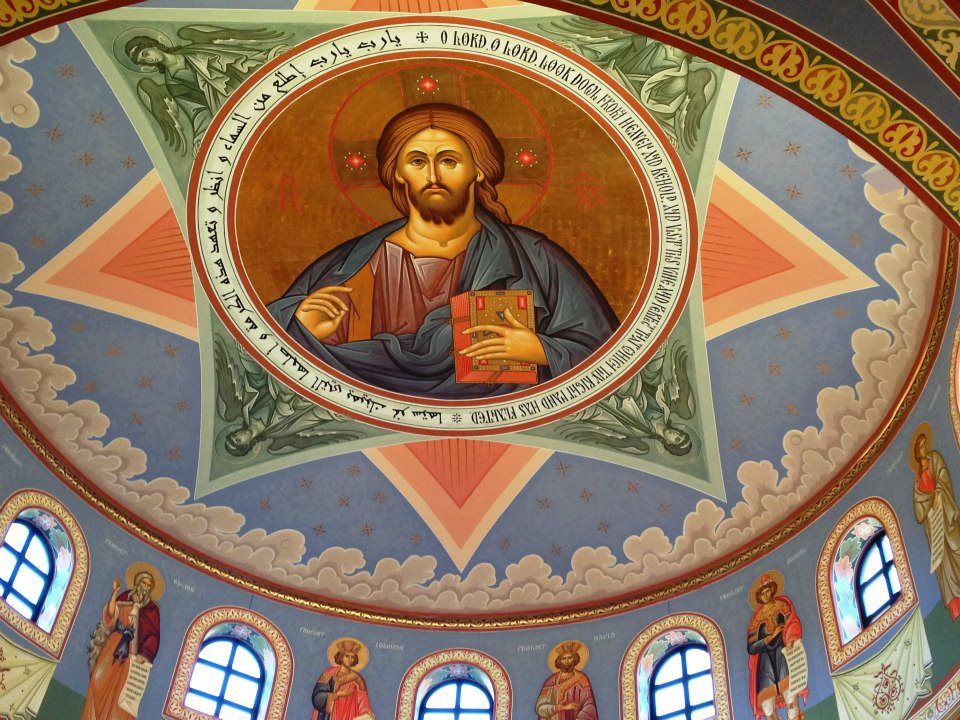
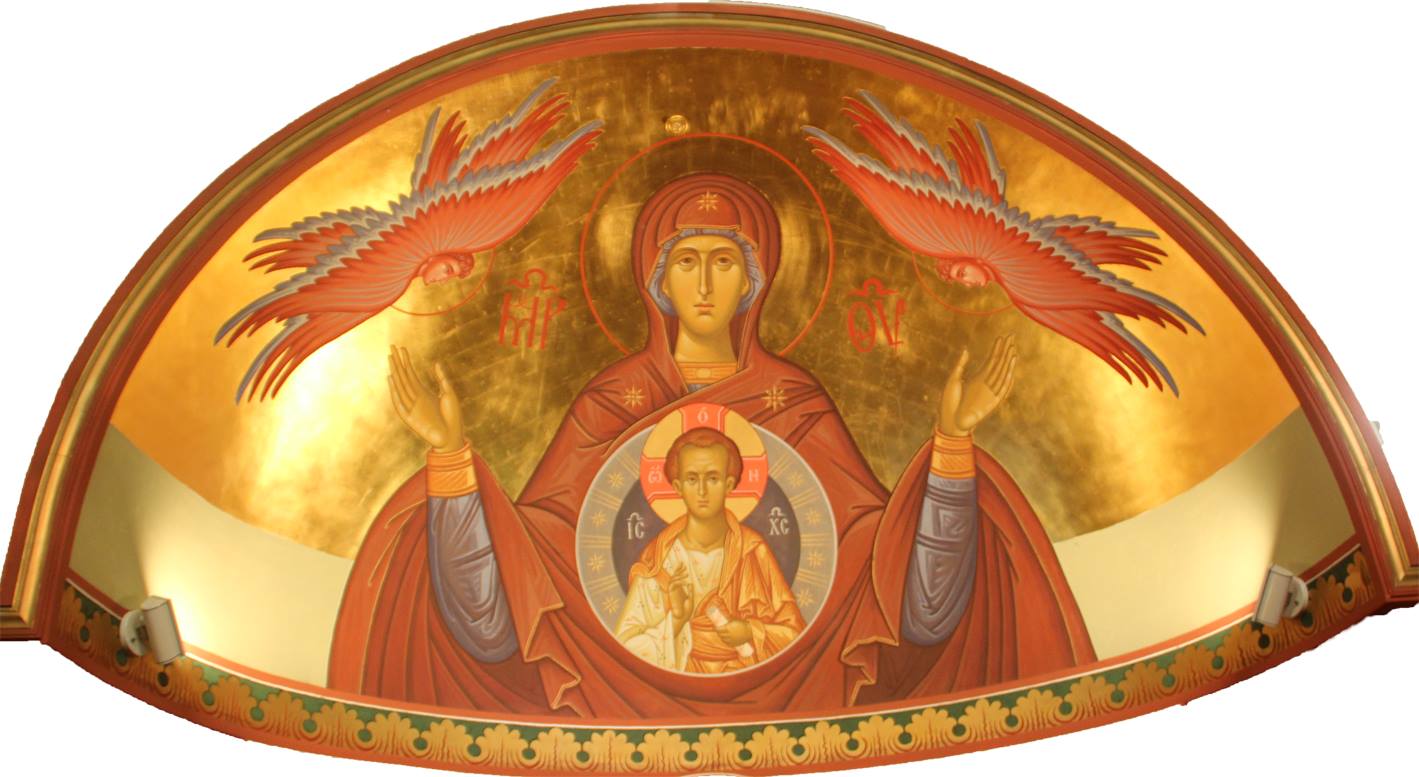
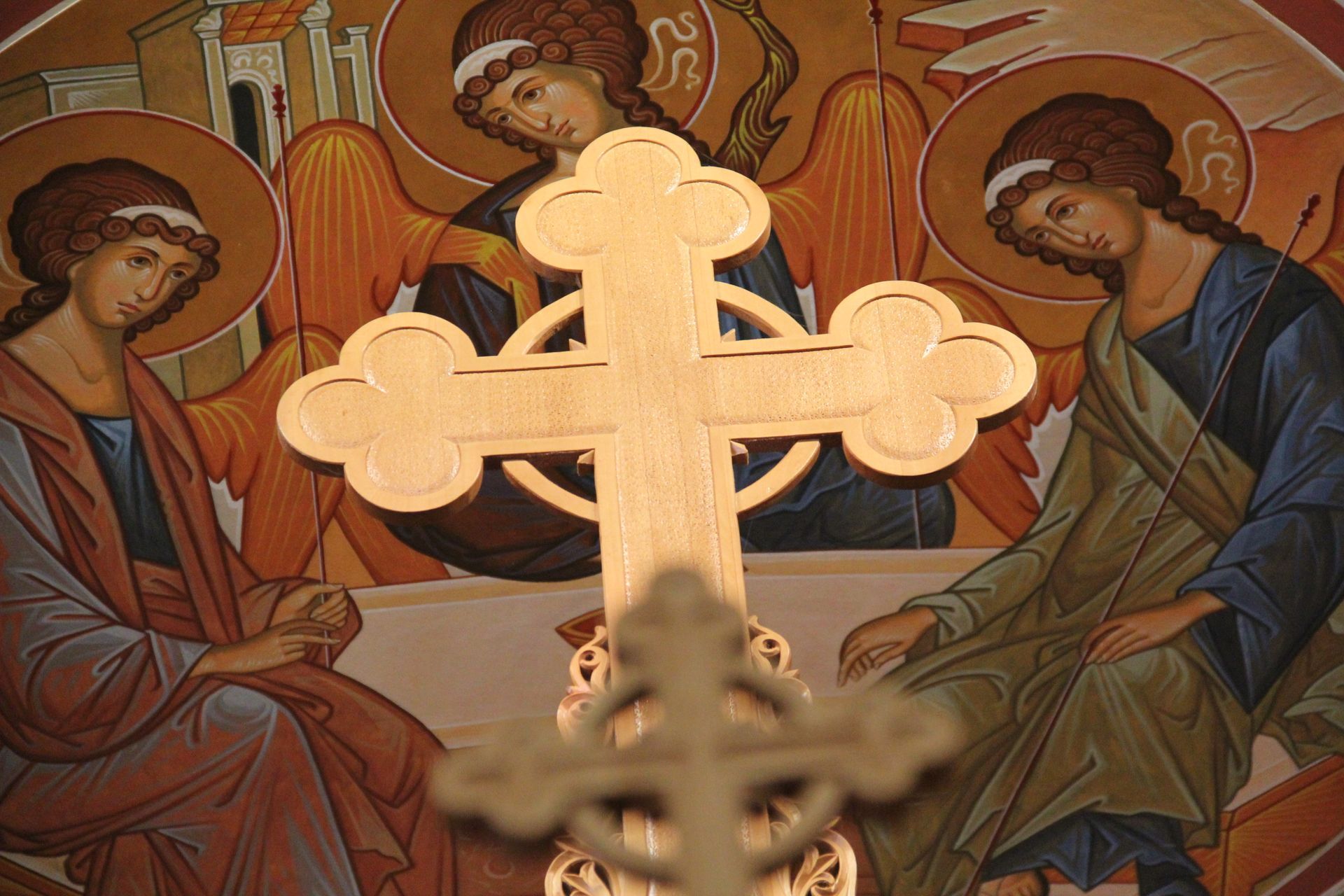
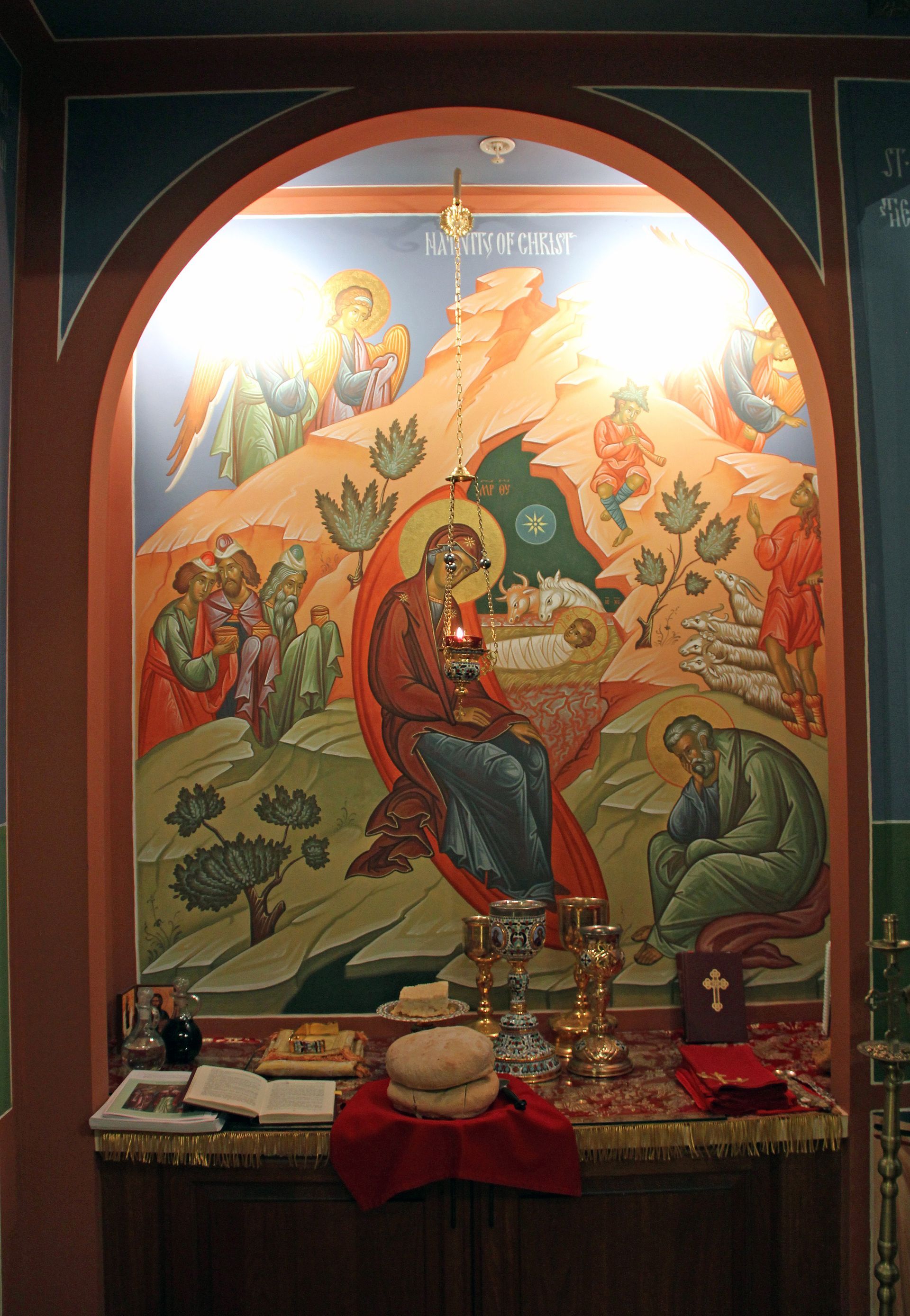
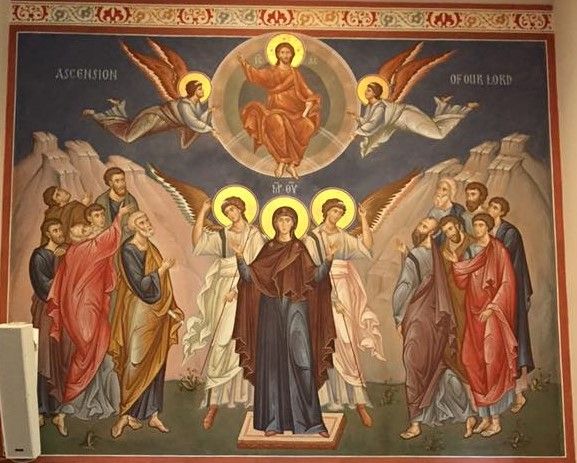
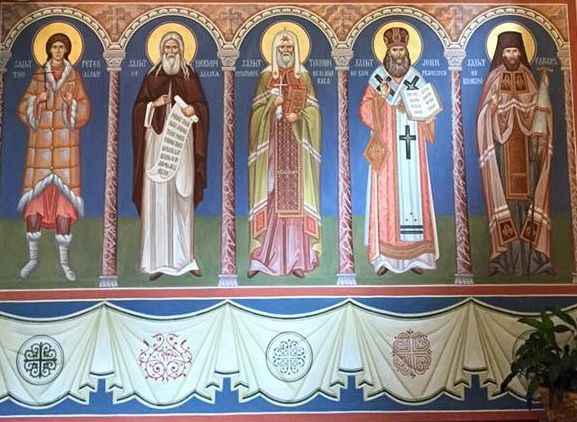
When Orthodox Christians stand in Church to pray, their hope is to undergo a spiritual experience, one that praises God and brings them closer to Him. Throughout the Sunday Divine Liturgy, for instance, we raise adorations to God, and venerate the Theotokos (The Mother of God) the Saints and angels, and continuously ask for God's mercy on us. To help us in this endeavor, the fathers of the Church have incorporated several elements of the physical world in God's worship. These elements utilize our senses as humans to help us in such a spiritual experience. This is evident through the smell of burning incense, hearing the prayers and praises in vocal hymns, tasting the Eucharist, and touching of relics. In addition, icons which are images of Jesus Christ, the Mother of God, the Saints and angels serve as our "windows to heaven".
Icons are full of symbolic meaning and are therefore not intended to give a realistic image but rather a divine one. For example, halos in the icons of Christ, the Virgin Mary, the saints, and the angels represent the presence of the Holy Spirit. Color also plays an important part. Gold represents heaven and eternity; red, divine life; blue, purity; and white, the divine energies used only for the Resurrection and Transfiguration of Christ. A book in the icon of Jesus Christ may seem out of proportion, but it is a symbolic reference to the Word of God generated from Christ and moving closer to us.
Contrary to the iconoclasts' belief, the most influential spokesman for the support of icons, St. John of Damascus (627-749) argued that we do icons of Jesus Christ because we as humans have seen Him in the flesh as the incarnate Son of God. Saint Luke is credited with painting the first icons of Christ and the Virgin Mary. Accordingly, iconogrophers throughout history have used the original icon as a guide. The year 843 marks the defeat of the iconoclasts during the reign of Empress Theodora. And this day continues to be remembered in the Orthodox Church each year on the first Sunday of Great Lent known as the Sunday of Orthodoxy. On this day, the faithful believers do a procession carrying icons as an assertion of the triumph of Orthodox belief over the iconoclasm heresy.



